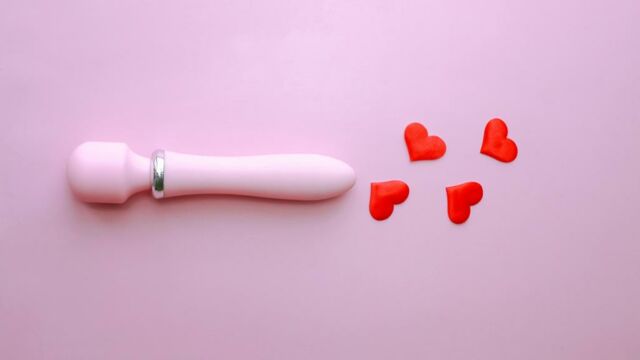Purchasing a new sex toy can be a lot like buying a new car; you have to do a lot of research. If you don’t, you could end up with either a total dud or something completely unsafe. That’s why we’ve put together this foolproof guide on what to look for and what to avoid when buying a new sex toy.
Discover our latest podcast
What to look for in a sex toy
Choosing the right sex toy can be hard work, but we have provided a few guidelines to make the process easier.
Do some research
The best sex toy is one you’ll use and enjoy, so the first step is figuring out what kind of toy you’ll like most. There are plenty of options to choose from when picking out a sex toy, from vibrators or clit suction toys to toys designed for partnered sex. So don’t rush; spend a little time browsing and do some research on what’s on the market. If you’re unsure whether or not a toy is for you, check out some reviews from sex toy bloggers such as Miss Ruby Reviews or Zoe Ligon to help you decide.
Clitoral vs G-spot stimulation
One thing to consider when buying a new sex toy is what kind of stimulation you enjoy. Generally, those with a vagina have the option to choose between clitoral stimulation, G-spot/ vaginal stimulation or even both! For clitoral stimulation, try a clitoral suction toy such as the Satisfyer Pro, a Womanizer or even a Lelo.
When it comes to G-spot or vaginal stimulation, you can take your pick between sex toys that vibrate such as, vibrators, bullets and eggs, or sex toys that don’t vibrate like dildos. If you’re looking for both clitoral and penetrative stimulation, some vibrators like the classic Rabbit have an extra appendage so users can achieve a blended orgasm.
What about anal play?
If you have a vagina, you might want to also consider anal toys. Anal play can lead to even more intense orgasms as the only thing separating your g-spot from the rectal cavity is a thin membrane. If you’re looking to give anal toys a try, think about starting off with anal beads or butt plugs. Bonus, these toys are also easy to use during partnered sex! Just remember, if you’re new to anal play, the key is to start small and work your way up.
Don’t forget the lube
It may be underrated and overlooked, but all sex toys are better with a little bit of lube. There are three main types of lube to consider, water-based, oil-based or silicone-based. If you’re unsure of what to pick, water-based lube is always the best way to go; it’s user friendly, easy to clean off, and it’s even compatible with silicone-based sex toys.
Materials to avoid
The sex toy industry isn’t FDA regulated, which means many brands and toys use materials that could be rather dangerous. So, when purchasing a sex toy, it’s vital to choose one with a Body-Safe logo. This will ensure your toy contains no porous or toxic materials.
Porous vs non-porous
Sex toys can either be made of porous or non-porous materials, one potentially being much more dangerous than the other. Non-porous materials are classed as such because they don’t have tiny holes in them. Whereas porous materials such as PVC or latex can contain tiny holes, making them hard to truly clean. These holes can harbour bacteria and fungi, which have the possibility of giving you an infection. Definitely not a beneficial quality in a sex toy. Porous sex toys are also more likely to contain phthalates, which have been found to be harmful in high quantities. If you do purchase a porous sex toy, make sure to throw it out if it develops any permanent discolouration or gains a funky smell.
Non-porous materials commonly used in sex toys include:
- Acrylonitrile butadiene styrene (ABS)
- Borosilicate glass
- Soda-lime glass
- Silicone
- Metals
Phthalates
Phthalates are a rather hard-to-pronounce chemical often used to make materials more malleable. Phthalates can be found in various products, from crocs to nail polish, but it’s not a chemical you want to have inside you. Low-quality sex toys tend to contain phthalates in high quantities, which are known to be possible human carcinogens. Investigations into phthalates are still ongoing, but this toxic chemical has been found to leak from some sex toys and affect the hormones.
Porous and potentially phthalate containing sex toys include those made from:
- Thermoplastic rubber (TPR)/ skin-safe rubber
- Thermoplastic elastomer (TRE)/skin-safe rubber
- Jelly Rubber
- Some types of polyvinyl chloride (PVC) such as sensafirm, UR3 and latex
With so many sex toys on the market, picking the perfect one can feel like a bit of a burden. To make the whole experience easier, remember to do your research and purchase a toy you will both use and enjoy. Better yet, make sure they are Body-Safe and aren’t made of any porous materials.















